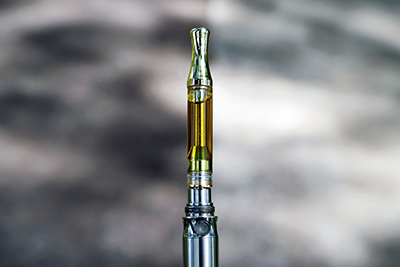Vitamin E is a group of eight fat-soluble vitamins. The most popular vitamin in the group, Vitamin E Acetate, has been used as an anti-inflammatory and antioxidant for many years now. It’s also commonly found in marijuana vape products because of its ability to prevent oxidation or rancidity. In this blog post, we will discuss what Vitamin E Acetate is and how it functions within cannabis vaping products!
What is Vitamin E Acetate and What Does it do to the Body?

It can be generally said that vitamin E is good for you in healthy amounts and when taken in the right manner. It’s an antioxidant, and numerous studies have shown that it can help with a variety of ailments including Alzheimer’s disease, blood disorders, and even menstrual cramp pain.
Vitamin E is normally consumed through food and dietary supplements and is also common in skin products. There is nothing harmful about the vitamin when consumed in these manners, but research suggests that the inhalation of high concentrations of vitamin E can be dangerous.
When inhaled, it becomes a highly reactive chemical that is harmful to tissue and cells in your respiratory system. It’s commonly found as an oil-like liquid, but it oxidizes quickly when exposed to air.
Why is it Used in Vape Products?
Vitamin E is added to certain vape cartridges because of its ability to protect the oils from oxidizing or turning rancid. It’s also used as a thickener or a dilution to extend the life of oils in cartridges.
Oxidation occurs when oxygen combines with molecules and this results in a loss of potency, changes in flavor profiles (which ranges between pungent like black pepper and oily like fish), and even potentially dangerous compounds being released into your cannabis cartridge.
At one time, vitamin E acetate was one of the most common additives to vaping products, both cannabis and nicotine. As evidence has come to light about its dangers, however, the use of the additive has decreased.
The Dangers of Using Vapes With Vitamin E Acetate: Lung Illnesses
Studies have shown that vitamin E can cause harm when inhaled. The direct cause and effect correlation is still being studied, but it seems that the sticky oil substance can cling to lung tissue, resulting in the associated lung injury.
The vitamin was discovered in the lungs of 94 percent (48 of 51) of patients who had symptoms consistent with e-cigarette usage, but not in any of the 99 healthy participants in a research published by The New England Journal of Medicine.
How Can You Tell if a Marijuana Vaping Product has Vitamin E Acetate?
While the Food and Drug Administration has been able to regulate the additive’s usage in nicotine vaping products, regulating its presence in THC-based vape products has proven to be much more difficult given that marijuana laws differ from state to state and marijuana is still prohibited at the federal level.
Still, the majority of cannabis vape manufacturers have taken the health of their customers into account and discontinued using the additive. None of the products carried at Diego Pellicer contain it.
If you are concerned about a product that you have, the easiest way to find out if it contains vitamin E is to look at the ingredients. Any reputable manufacturer should tell you on the label whether it is there. If there isn’t an ingredients list – or you have long since thrown it away – consider where you purchased the product. Black market or illegal vape products are significantly more likely to contain harmful additives.

What are Some Alternatives in Cannabis Vape Products?
Fortunately, there are several other additives out there that can be used as an alternative. For instance, vegetable glycerin is an additive that doesn’t pose any dangers when exposed to oxygen and it’s also able to prevent oxidation from occurring by reducing access to oxygen. Additionally, propylene glycol will perform a similar function but without the antioxidant properties found within other types of oils like hemp seed oil or coconut oil.
More From the Center for Disease Control
The official recommendation from the CDC is that “people not use THC-containing e-cigarette, or vaping, products, particularly from informal sources like friends, family, or in-person or online dealers.”
That last part is extremely important when it comes to THC vapes, as the CDC reports the following statistics regarding where patients hospitalized with a vitamin E acetate related lung injury from THC vaping acquired their vape products:
- 78% reported acquiring products only from informal sources (family/friends, dealers, online, or other sources).
- 16% reported acquiring products only from commercial sources (recreational and/or medical dispensaries, vape or smoke shops, stores, and pop-up shops).
- 6% reported acquiring products from both commercial and informal sources.
The Last Toke
In general, beware that cannabis is not as well-regulated as other products you purchase, so often extra research is needed. The best advice may be: If you find a vape product that you trust and that you know does not have harmful additives, stick with it.


